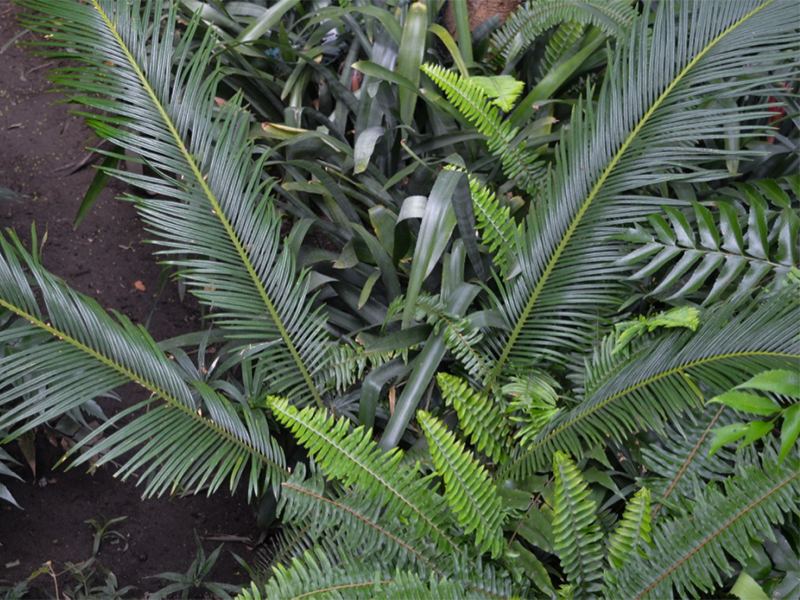
Tropicals > Cycas > Cycas revoluta > Cycas revoluta
Cycas revoluta
King Sago Palm, Fern Palm, Sago Palm
Origin: Kyushu, Japan.
| Family |
| Cycadaceae |
| Genus |
| Cycas |
| Species |
| revoluta |
| Category |
| Tropicals |
| Type |
| Shrub (evergreen) |
| USDA Hardiness Zone |
| 10a - 10b |
| Canadian Hardiness Zone |
| Requires cold season protection under glass. |
| RHS Hardiness Zone |
| H2 |
| Temperature (°C) |
| 1 - 5 |
| Temperature (°F) |
| 34 -40 |
| Height |
| 1 - 3.5 m |
| Spread |
| 1 - 3 m |
Photographs
Description and Growing Information
Flowering Period
| General Description |
| Long-lived tropical plant botanically closer to conifers than to palms. |
| Landscape |
| Temperate gardens as a potted plant where it is indoors during the winter months. In more tropical climates it is frequently grown as either a specimen or grouped as a landscape plant. |
| Cultivation |
| Grows best in medium to heavy, well-drained soil in full sun. Tolerant to some drought. |
| Growth |
| Slow |
| ID Characteristic |
| A crown of shiny, arching, palm-like leaves sprout atop a shaggy upright trunk. |
| Habitat |
| Forest undergrowth. |
| Bark/Stem Description |
| Thick and corky bark. |
| Leaf Description |
| Bears 54 - 110 flat leaflets, arranged opposite each other along the central stem. Leaves are long, measuring 1.5 - 1.7 m in length. |
| Flower Description |
| Male and female flowers found in separate plants, in the form of cones. Male cones are terminal. Female cones are around the apex of the stem. Flowering highly variable. |
| Fruit Description |
| Bearing ellipsoid or globose smooth seeds. |
| Colour Description |
| Leaves and seeds are bright green and the bark is brown. |
| Texture Description |
| Leaves are smooth and glossy. |
| Notable Specimens |
| Fairchild Tropical Botanic Garden, Coral Gables, Florida, United States of America. Centennial Conservatory, Thunder Bay, Ontario, Canada. Bok Tower Gardens, Lake Wales, United States of America. |
| Propagation |
| Sown from seed. |
| Ethnobotanical Uses (Disclaimer) |
| Contains alkaloids of carcinogens and also an amino-acid that causes chronic nervous disorders. Regular consumption leads to severe health problems and death. This toxicity can be removed if properly prepared, but use often means the death of the plant and it is becoming rare in the wild. |

